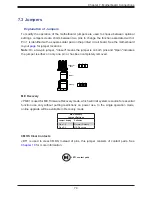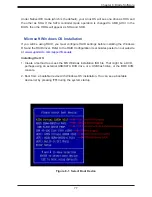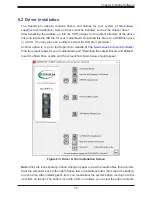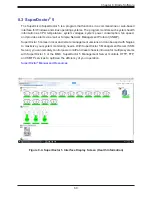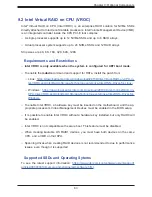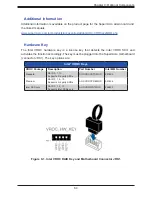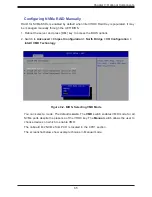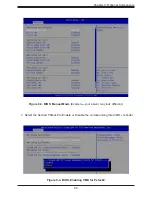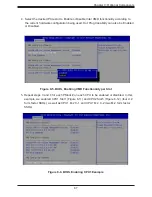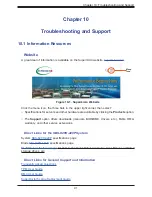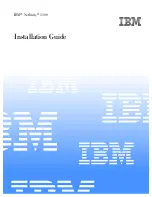
76
Chapter 8: Blade Software
Chapter 8
Blade Software
After the hardware has been installed, you can install the Operating System (OS), configure
RAID settings and install the drivers.
8.1 Installing the Operating System
An operating system (OS) must be installed on each blade module. Blades with Microsoft
Windows OS and blades with Linux OS can operate within the same blade enclosure. Refer
to the
for a list of supported operating systems.
Installing by using PXE Boot
Preboot Execution Environment (PXE) is used to boot a computer over a network. To install
the OS using PXE, the following conditions must be met:
•
The PXE BOOT option in BIOS must be enabled.
•
A PXE server has been configured; this can be another blade in the system.
•
The PXE server must be connected over a network to the blade switch to be booted.
•
The blade has only non-partitioned/unformatted hard drives installed and no bootable
devices attached to it.
Once these conditions are met, make sure the PXE server is running. Then turn on the blade
on which you wish to install the OS. The BIOS in the blade will look at all bootable devices
and finding none, will connect to the PXE server to begin the boot/install.
Installing by using Virtual Media (Drive Redirection)
You can install the OS via Virtual Media through either the IPMIview (Java-based client utility),
SuperBladeTool or the Web-based Management Utility. With this method, the OS is installed
from an ISO image that resides on another system.
Refer to the manuals on the
for further details on the Virtual Media (CD-
ROM or Drive Redirection) sections of these two utility programs.
Linux Installation with Two Storage Drives—Note
When installing Linux with three storage drives you may encounter a situation where one
drive is recognized as HDA and the other drive is recognized as SDA. This is normal since
in this case the connection for SATA HDDs is from two different controllers.













